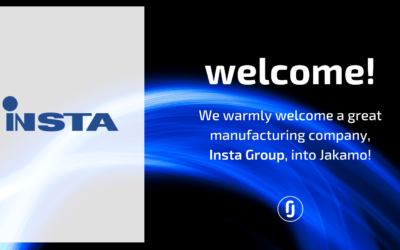Technology is agile, but are we?
I have seen a rapid and shall I say beautiful transformation of the software industry in the last few years. As I see it, I can identify at least “two worlds” in the B2B-software industry at the moment:
- The traditional, where companies spend a huge amount of resources, money and time on solving complex business processes. In large corporations, these are systems we could not live without, and likely this world will continue to see its daylight quite many years ahead.
- The agile, where a large amount of new, often smaller, ready-to-run software is born on a monthly basis. This software is often made with a clear user group in mind, for example software for marketing and sales.
Speaking of marketing and sales, this is a group who have taken over a large part of the companies IT investments during the last years. Companies like Salesforce.com, Mailchimp and WordPress have changed the traditional market and culture. A new culture has been born, where marketing executives themselves can scan the market, find software and in a self-service way evaluate, if the software could help them in their business.
This new culture is also, (maybe not at the same speed) changing other functions in the companies. To name a few, we have Freshbooks with its Cloud accounting and Skillhive for HR.
Software for industrial companies has, in my point of view, a more traditional culture. Though we will probably see a whole bunch of agile software for supply chain management (SCM), engineering, quality management and R&D in the next few years.
When agile software approaches traditional cultures, it is obvious that the ways of working and decision-making will change. The agile software gives birth to a new culture, which makes it possible for us to develop more rapidly. We no longer need to respect the norms of traditional culture where implementations need to be global from day 1, projects last months or years and the budgets are astronomic. Instead, the software can be implemented in a few minutes and evaluated by a smaller group to figure out if the software can help us in our business.
Overall, when developing the business I think we no longer need to respect the norms of traditional business cultures. Instead, we need to find new ways how to rapidly develop by trying out new ideas.
So, the technology is and will be more agile, but are we?
Andy Lundström
Customer Engagement Manager
Jakamo Limited
E-book: Supplier Experience
Supplier Experience – The Fundamentals of Modern Supplier Collaboration is a carefully crafted guide that presents the concept of Supplier Experience through six practical lenses. Download your free copy!
Recent Posts
- Jakamo Business Central ERP Connector Now Available in Microsoft Marketplace
- Insta Group strengthens supplier collaboration and sustainability efforts with Jakamo
- TECHSAVVY MEDIA: Supply chain expert – Relationships with your suppliers are key to greener manufacturing
- Fastems Advances Supply Chain Sustainability with Jakamo
- Jakamo achieves ISO 27001 certification








Very interesting post! Culture is very hard and time-consuming to change so I think no agile technology can unfortunately change an existing culture with faster implementation time, since systems are only one part of the process. But what it does is, that it makes us question (and hopefully) re-adjust our mission, values and value-statement to customers. If we are brave enough, that is.
Hi Emma, you are so right. In many cases, changing a company’s existing culture can be a massive challenge. Then, technology has developed so fast that we sometime can find it hard to keep track. What I see as one of the biggest challenges in companies is when the culture itself makes it hard to make changes. Even regarding smaller development topics, people are put in a process where they need to ask for permission, spend a lot of time making inside sales –pitches, filling out forms: just because they have found something to develop, and probably have a solution for it. This is a state where the company’s greatest assets are used wrong. I strongly support a culture where people have a big influence on development topics and some kind of freedom to try out new ideas / Andy
That´s right Andy! When you dont´t have to buy servers and software licenses beforehand, you are able to develop the system side by side with the business, as the knowledge and understanding grows. There are too many implementation projects gone south, because companies don´t understand how the system is going to drive business goals. The focus is easily lost and money spent without positive outcomes. And if you are able to implement the system piece by piece, you are able to measure the outcomes more precisely.
“Piece by piece” is in my opinion a great option ☺ Of course, the company needs to have a clear strategy and goal in mind. Agile technology makes it possible to develop piece by piece towards that goal. / Andy
Emma and Sami, thank you both for the comments and discussion. Sorry for commenting so late. We just changed our blog –platform and had forgotten to turn the notifications on. / Andy
Comments are closed.